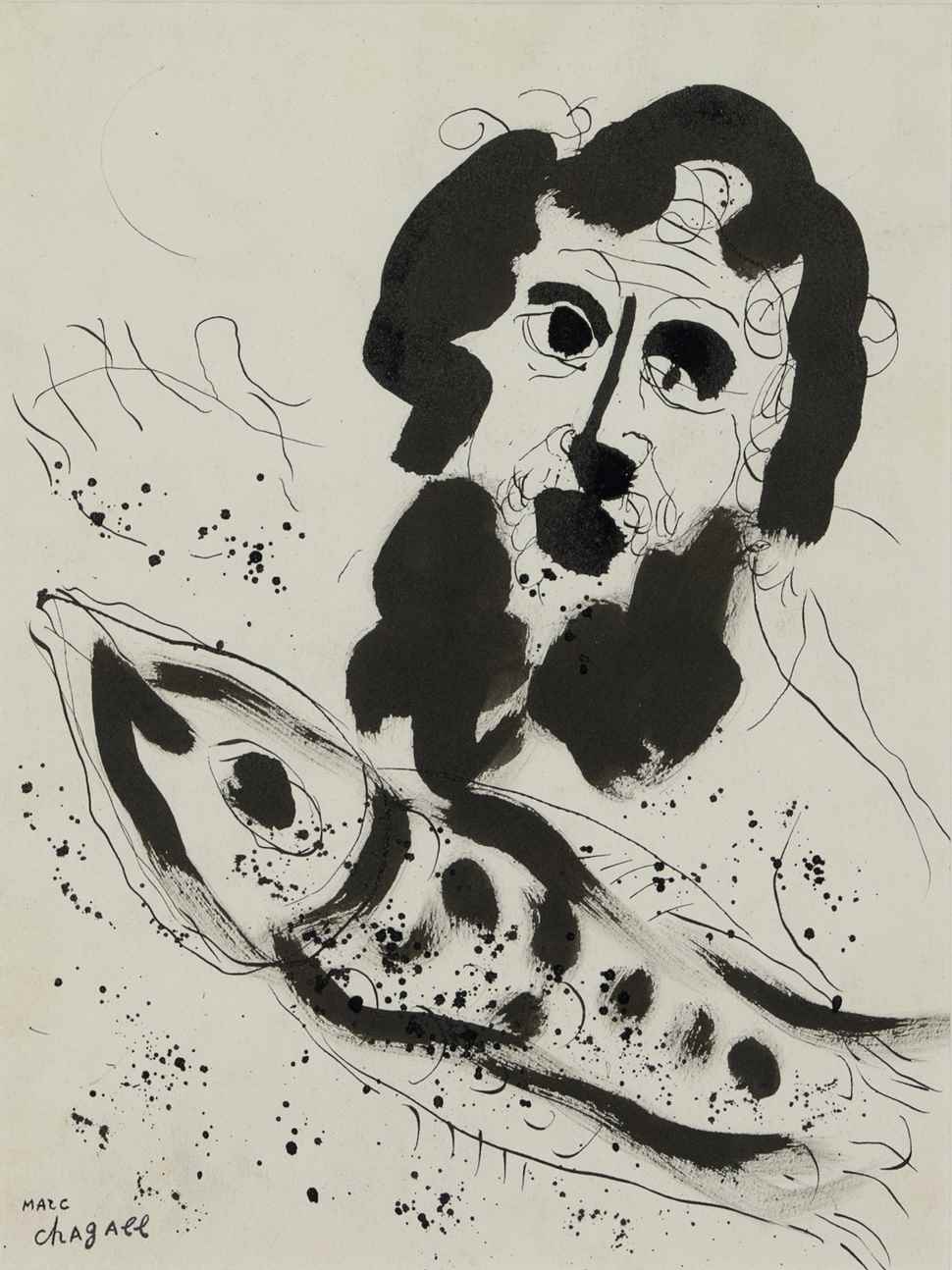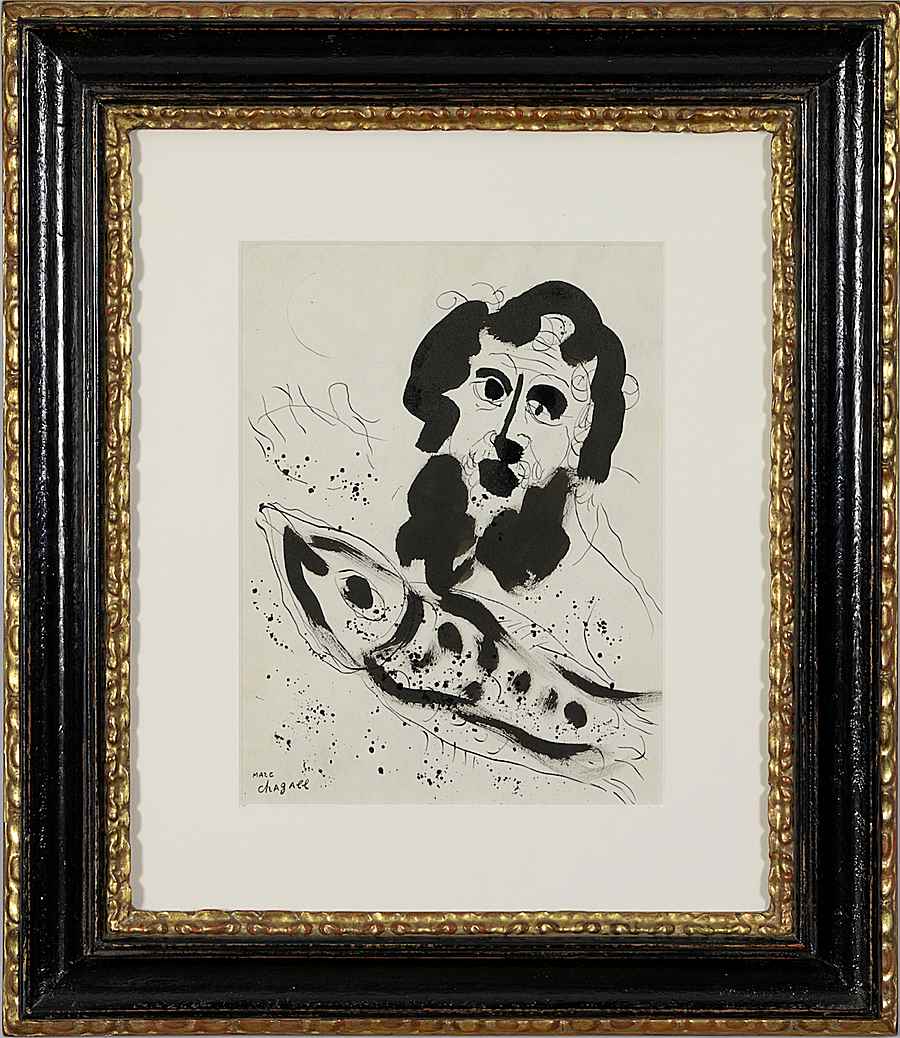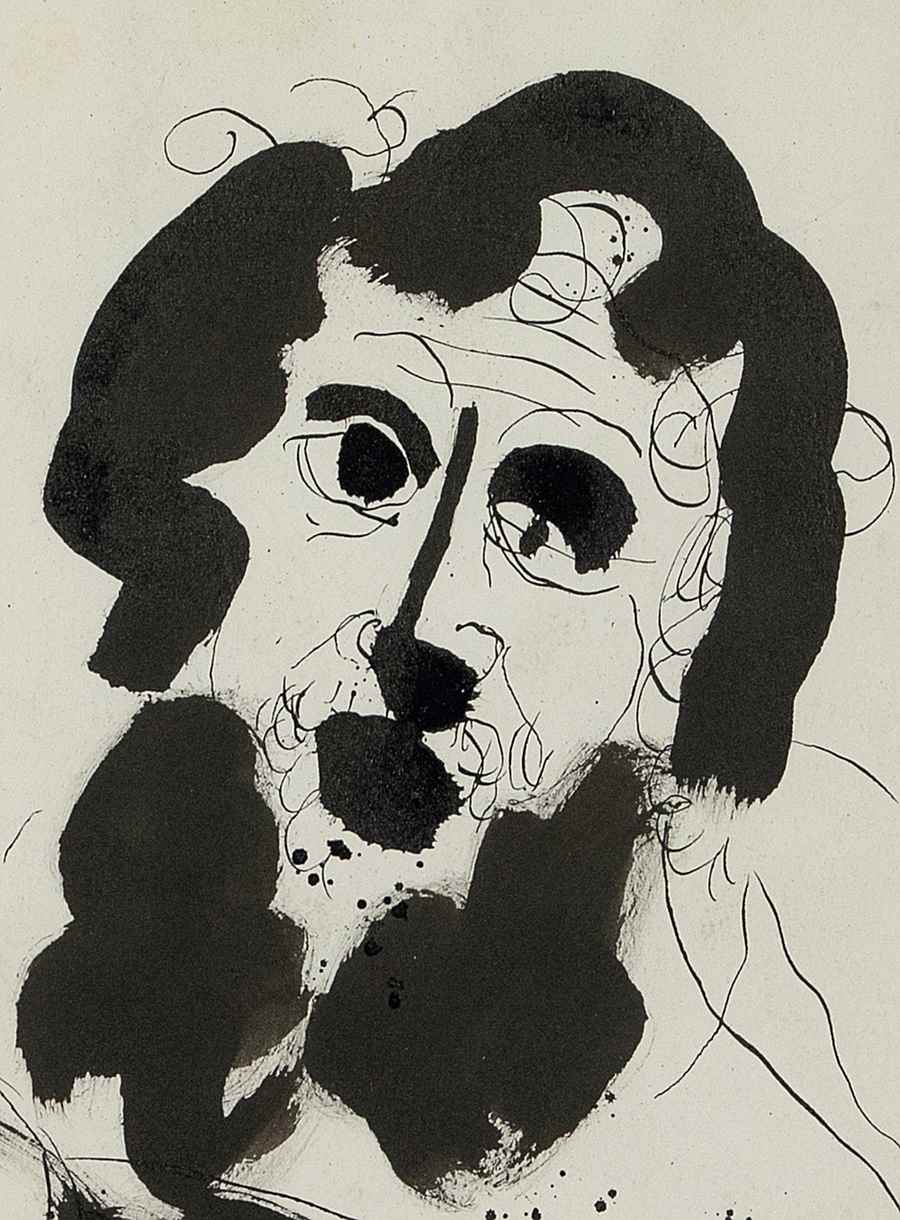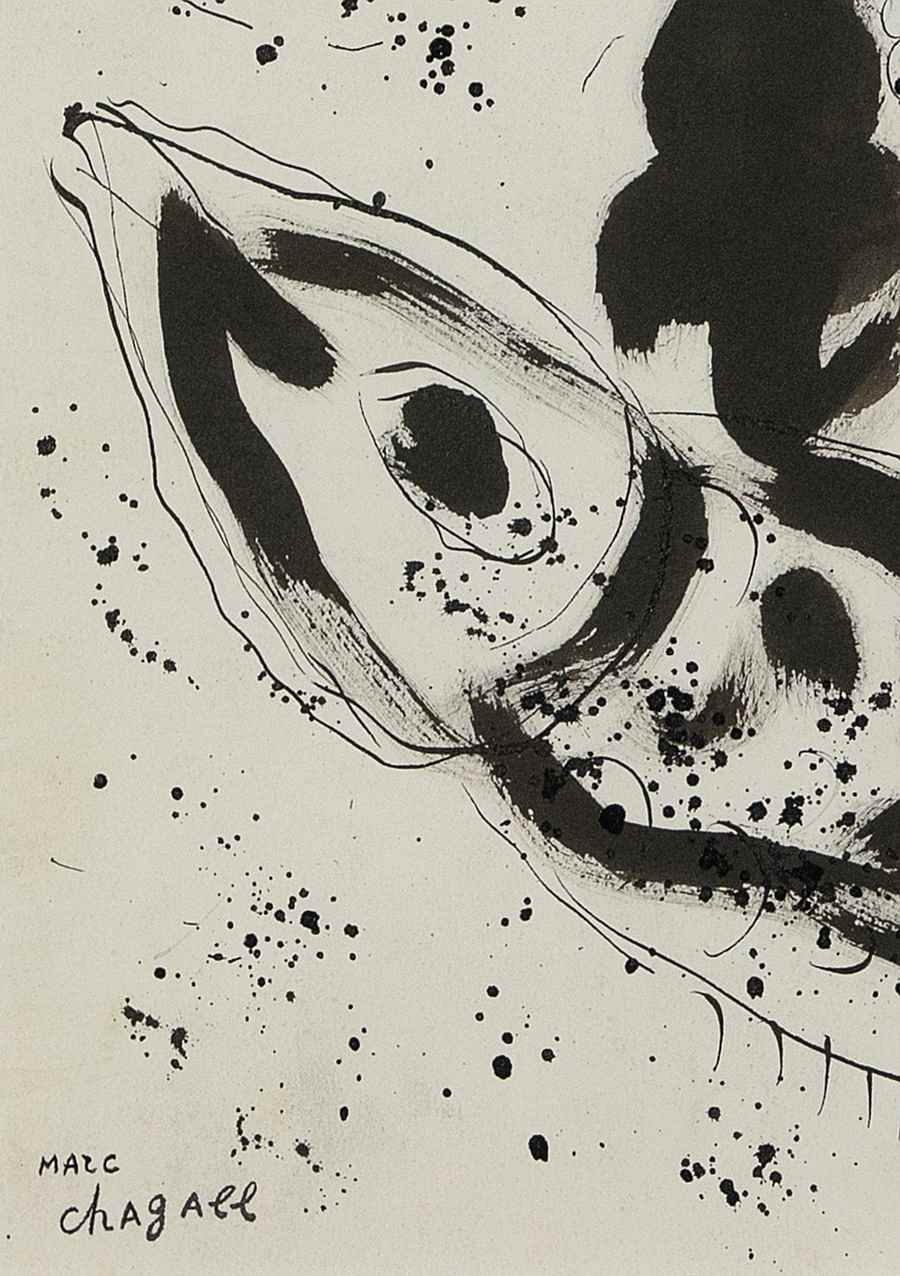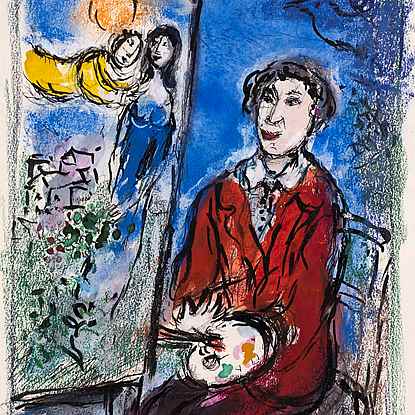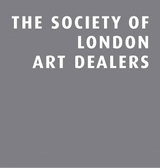Marc Chagall (1887 - 1985)
Jonas
Request Viewing
Indian ink on paper
35.6 x 26.9 cm (14 x 10 ⅝ inches)
Signed with Estate stamp lower left, Marc Chagall
Executed in 1958-59
-
Provenance
Collection of David McNeil, the artist’s son
Private collection, Switzerland, acquired from the above in 1986 -
Exhibitions
Bundeskanzleramt Bonn (Federal Chancellery), Marc Chagall, Die Bibel: Gouachen, Aquarelle, Pastelle und Zeichungen, 15th November 1989 – 12th January 1990; later travelled to Landesmuseum Mainz (State Museum), Marc Chagall, Die Bibel: Gouachen, Aquarelle, Pastelle und Zeichungen, 4th February – 22nd April 1990, no. 100, p. 127 (illustrated)
London, Stern Pissarro Gallery, Marc Chagall: Master of Colour, June – July 2016, pp. 40-41 (illustrated) -
-
Description
This was a preliminary work for pl. 85, for the 1960 Verve Bible publication.
This work is accompanied by a certificate of authenticity issued by Jean-Louis Prat on behalf of the Comité Chagall dated 21st November 2013.
This original work of art by Marc Chagall is available for immediate purchase.
Artist's Biography
The Russian-born French painter Marc Chagall was born in 1887 to a humble Jewish family in the ghetto of Vitebsk, a large town in White Russia, and passed his childhood steeped in Hasidic culture. Very early in life, Chagall was encouraged by his mother to follow his vocation after she managed to get him into an art school in St Petersburg.
After completing his studies in St Petersburg, Chagall returned to Vitebsk and became engaged to Bella Rosenfeld. In 1910 he set off for Paris which was regarded as “the Mecca of art” and as a tenant at La Ruche, Chagall was in the thick of the artistic community, living alongside both Modigliani and Soutine. During this time in Paris, Chagall’s work was tinged with the influence of Daumier, Jean-François Millet, the Nabis and the Fauves, and he was also influenced by Cubism.
Chagall returned to Vitebsk in 1914, and in 1915, he married Bella. In 1917 he was appointed provincial Commissar for Fine Art and became involved in ambitious projects for a local academy. However, two and a half years later he was forced to leave in order to escape the revolutionary dictates of Malevich.
After a time in Moscow where he worked in the Jewish theatre, then in Berlin where he studied the technique of engraving, Chagall returned to Paris in 1923. He illustrated Gogol’s Dead Souls, La Fontaine's Fables and the Bible for the publisher Vollard.
The French Surrealist Andre Breton admired the "total lyric explosion" of Chagall's pre-war painting and tried to claim that Chagall was a surrealist, although Chagall himself admitted only to having flirted with Surrealism between 1941 and 1948 during his exile in New York. Indeed, Chagall’s emblematic irrationality shook off all outside influences. His compositions were governed largely by colour. Using images from his memory he wove reality and imagination into a single legend, one that was born in Vitebsk and dreamed in Paris.
On his return to France, Chagall discovered ceramics, sculpture and stained glass. He settled in the south of France, first at Vence (1950), then in Saint-Paul-de-Vence (1966). Commissions poured in: for the Assy Baptistery in 1957, the cathedrals of Metz (1960) and Rheims (1974), the Hebrew University Medical Centre synagogue in Jerusalem (1960) and the Paris Opéra (1963). A painter-poet, celebrated by Apollinaire and Cendrars, Chagall brought back the forgotten dimension of metaphor into French formalism.
You may also like
-
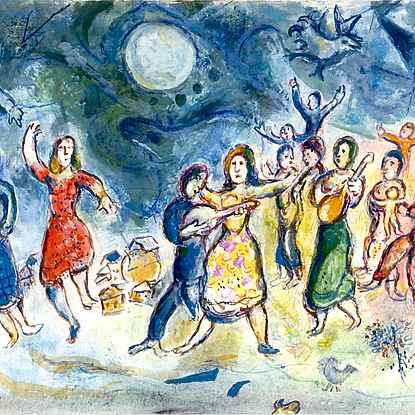 Fête au Village Marc Chagall (1887 - 1985)
Fête au Village Marc Chagall (1887 - 1985) -
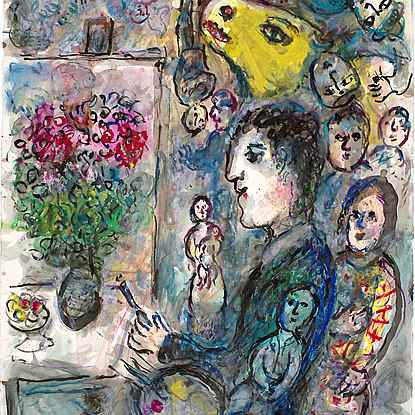 Peintre au Chevalet au Bouc Jaune Marc Chagall (1887 - 1985)
Peintre au Chevalet au Bouc Jaune Marc Chagall (1887 - 1985) -
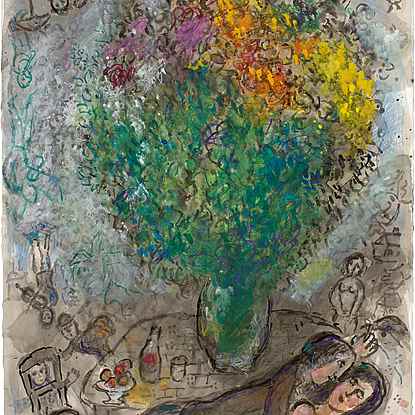 Couple Allongé au Grand Bouquet Marc Chagall (1887 - 1985)
Couple Allongé au Grand Bouquet Marc Chagall (1887 - 1985) -
Le Peintre devant "Le Soleil Rouge" Marc Chagall (1887 - 1985)
-
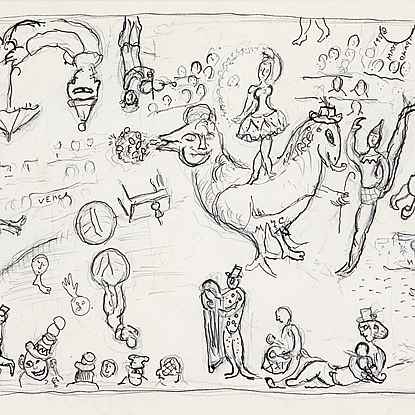 Esquisse pour "Commedia dell'arte" (pour le foyer du théâtre de Francfort) Marc Chagall (1887 - 1985)
Esquisse pour "Commedia dell'arte" (pour le foyer du théâtre de Francfort) Marc Chagall (1887 - 1985) -
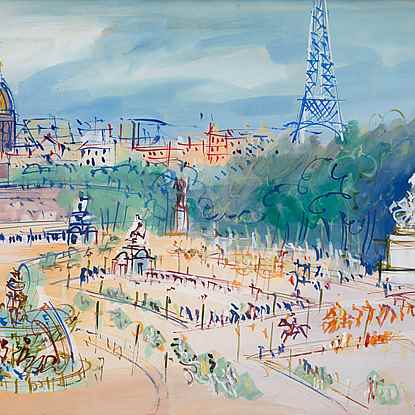 Place de la Concorde Jean Dufy (1888 - 1964)
Place de la Concorde Jean Dufy (1888 - 1964)

